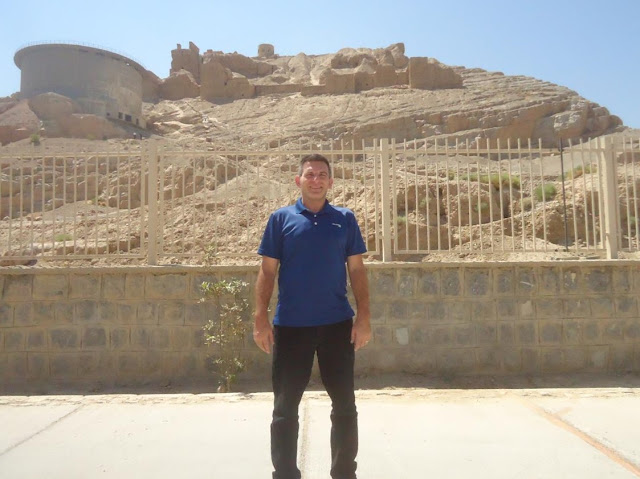The Atashgah of Isfahan (آتشگاه اصفهان) is a Sassanid-era archaeological complex located on a hill with Sassanid mud brick settlements of the same name about eight kilometers west of city center of Isfahan, Iran. It is believed to be an ancient Zoroastrian fire temple which is currently no longer in use. Looking from the Atashgah gives a magnificent view of Zayandeh Rud river and the city of Isfahan. The hill, which rises about 210 meters above the surrounding plain, was previously called Maras or Marabin after a village near there.
Another feature of the complex is the remains of a tower-like circular building on the very top of the same hill. This structure, which was once at least twenty meters high, is known by the local populace as the Borj’e Ghorban and appears to have been a military watch-tower with a flare that could be lit to warn of an approaching enemy (i.e. a beacon).
In both cases, the remaining walls are of baked brick, held together with a clay-reed mixture. In the 10th century, the buildings were used by the Esmaili inhabitants of Isfahan to hide from tax collectors. The historian Masudi visited the site around the same time, and records local tradition as having believed that the site was converted from one of idol worship to one of fire by "King Yustasf (i.e. Vishtaspa, the patron of Zoroaster) when he adopted the religion of the Magi."
Below in the plain on the opposite side of the road a footpath leads down to some interesting Pigeon Towers, some of which have been decorated.










No comments:
Post a Comment